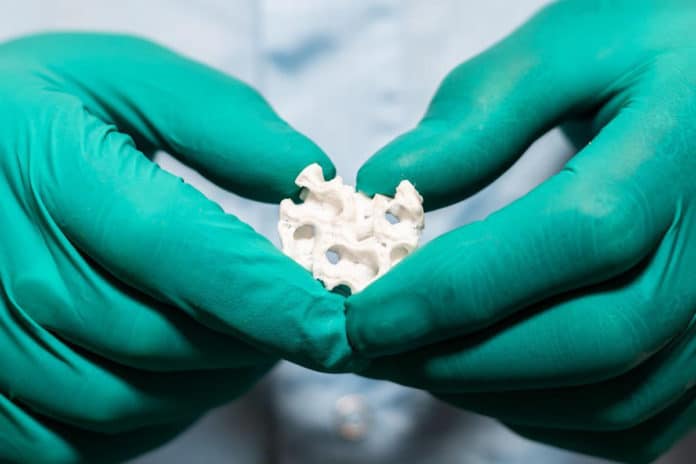It is not easy for astronauts to live in space. The human body is evolved to live on Earth’s gravity, so once our bodies are removed from that environment our bodies do not function properly. Muscles wither, bones start losing mass and become more susceptible to fractures.
3D bioprinting could help astronauts to 3D print new skin patches to patch up wounds, or pieces of bone to help heal fractures, just like it does here on Earth – help doctors patch up wounds or even print new functioning organs for transplant. Scientists from the University Hospital of Dresden Technical University (TUD) in Germany bio-printed skin and bone samples upside down to help determine if the method could be used in a low-gravity environment.
The research is the part of the European Space Agency’s 3D Printing of Living Tissue for Space Exploration project. The team used “bio-ink” made out of human blood plasma to minimize chances of body rejection. To stop the ink from flying off in droplets, the researchers added a plant and algae-based materials to increase the viscosity.
“Skin cells can be bioprinted using human blood plasma as a nutrient-rich ‘bio-ink’ – which would be easily accessible from the mission crew members,” says Nieves Cubo, a team member on the project.
“Producing the bone sample involved printing human stem cells with a similar bio-ink composition, with the addition of a calcium phosphate bone cement as a structure-supporting material, which is subsequently absorbed during the growth phase.”
Ultimately, the idea is to help astronauts treat injuries with the new tools when they’re millions of miles from the nearest hospital.
“A journey to Mars or other interplanetary destinations will involve several years in space,” comments project leader Tommaso Ghidini. “The crew will run many risks, and returning home early will not be possible. Carrying enough medical supplies for all possible eventualities would be impossible in the limited space and mass of a spacecraft.”
“Instead, a 3D bioprinting capability will let them respond to medical emergencies as they arise,” said Tommaso Ghidini. “In the case of burns, for instance, brand new skin could be bioprinted instead of being grafted from elsewhere on the astronaut’s body, doing secondary damage that may not heal easily in the orbital environment.”
